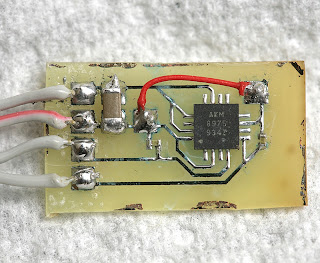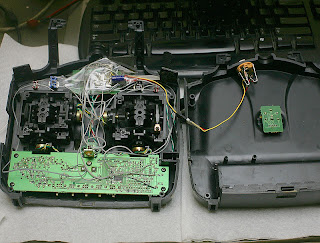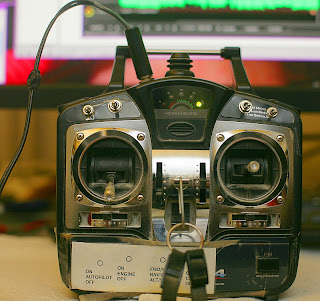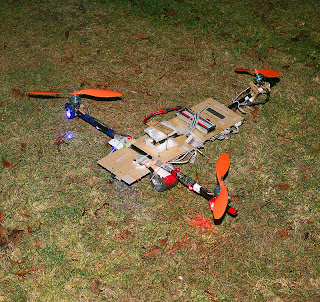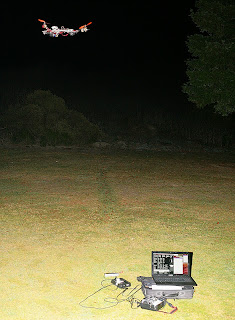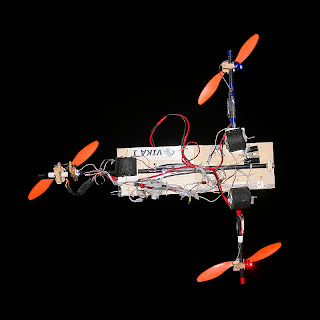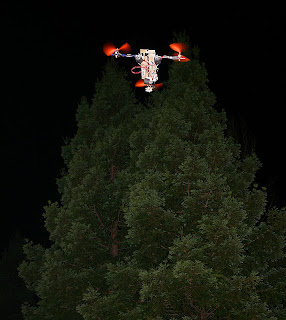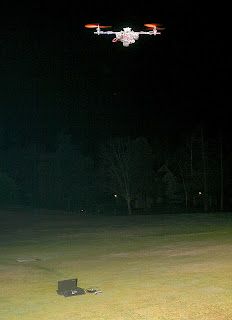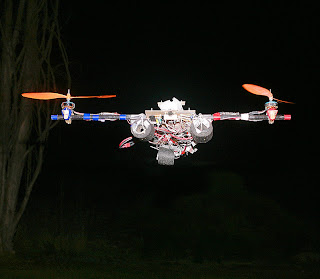 Inspired by this series of DIY videos, and a little wary of over-spending on yet another silly flying machine, I've decided to have a go at building my own Tricopter. The idea is to see just how cheaply I can build the whole thing from start to finish. If you watch at least the first video in the link, the whole idea is QSC - Quick, Simple and Cheap. I'm not necessarily following the videos above step by step, rather just using them for some ideas and inspiration.
Inspired by this series of DIY videos, and a little wary of over-spending on yet another silly flying machine, I've decided to have a go at building my own Tricopter. The idea is to see just how cheaply I can build the whole thing from start to finish. If you watch at least the first video in the link, the whole idea is QSC - Quick, Simple and Cheap. I'm not necessarily following the videos above step by step, rather just using them for some ideas and inspiration.
Wanting a certain amount of precision, and not having access to any fancy CNC or laser cutting machines, I started playing with Inkscape thinking I might want to send off some jobs to Ponoko. With Inkscape, I made the template above, and printed it off on my printer to check the scaling. I got lucky and it seems that my printer is pretty true to the measurements of the software, so printed templates being taped/glued to the wood is how I'm going to try and keep things as precise as I can when working by hand.
So off I go, deciding on materials. The QSC video mentioned before calls for 3/4" pine. Ick. It seems like it would be too bulky and probably heavy. Narrow pieces of pine that's been properly dried to avoid twisting could pose a problem, so I considered balsa, because it's light and readily obtainable. Then following this suggestion, I looked at basswood. Basswood is heavier than balsa, but balsa is spongy (bolting it together compresses the wood and misaligns things), it also splits, flakes and chips when you try to get it apart after putting it together. 3/8" basswood is stocked in large quantities at a local hobby place, and it's cheap. 24" lengths are 1.19 each. Score 1 for cheap!
 I asked about sheets of ply, hoping they would have something decent and thin-ish in a 12x24 sheet. At ~30$ for a sheet, that seemed to go against the 'cheap' part of the whole idea, so I opted for some 1/16" 4x36" strips. 3$ each. Score another point for cheap!
I asked about sheets of ply, hoping they would have something decent and thin-ish in a 12x24 sheet. At ~30$ for a sheet, that seemed to go against the 'cheap' part of the whole idea, so I opted for some 1/16" 4x36" strips. 3$ each. Score another point for cheap!
The one drawback to thin sheets of wood is that it flexes along the grain, where ply is much more rigid. The simple solution to this is to make sure that each layer of wood used has the grain perpendicular the layer below it. If need be, I'll use some CA glue to glue two layers together and make my own ply.
 Armed with a fresh hobby knife, a few leftover screws, my templates and a cordless drill, I set about building my first test frame. It's sloppy, but the idea is to see what works and what doesn't. I messed up the first set of holes on one side of the sandwich, having drilled them both with the wood grain in the same direction, so I had to drill a new set. Then I discovered just how hard it is to drill 9 holes all perpendicularly through narrow bits of wood, using only a handheld cordless drill. If the holes aren't absolutely perpendicular, things get skewed, and maintaining an accurate symmetrical Y shape is completely impossible. You can see the result, where my rear arm is a few degrees off, because one of the nine holes I drilled in the wood went through at just a little bit of an angle. That's going to be setting myself up for all kinds of yaw and balance trouble later on, once I start teaching my cheap bits of wood to fly.
Armed with a fresh hobby knife, a few leftover screws, my templates and a cordless drill, I set about building my first test frame. It's sloppy, but the idea is to see what works and what doesn't. I messed up the first set of holes on one side of the sandwich, having drilled them both with the wood grain in the same direction, so I had to drill a new set. Then I discovered just how hard it is to drill 9 holes all perpendicularly through narrow bits of wood, using only a handheld cordless drill. If the holes aren't absolutely perpendicular, things get skewed, and maintaining an accurate symmetrical Y shape is completely impossible. You can see the result, where my rear arm is a few degrees off, because one of the nine holes I drilled in the wood went through at just a little bit of an angle. That's going to be setting myself up for all kinds of yaw and balance trouble later on, once I start teaching my cheap bits of wood to fly.
Cheap is going to take a hit here, because I may drop an extra $60 to invest in a workstation for my dremel. The nice thing about having one is that I'll be able to use a cutting bit for shapes and cutouts into the wood, rather than the tedious and exhausting process of etching them out by hand. I'll also be able to make replacement parts when the ground decides to jump up and attack my poor tri! ;)
I still have to sort out motors/props/ESCs I want to attach to this thing, and then there's the wait time for a fresh-baked APM2. In keeping with the idea of 'cheap' I thought about picking up someone's used APM1 1280, but the general asking price is in the area of $100. I would still have to get a GPS and Magentometer, plus shipping, which all in all comes out to more than a new APM2. Excruciating, but... I'll wait!
APM2: $200+ shipping
Motors, ESCs, yaw servo, Rx and other electronic stuff: $120+shipping
Wood, CA glue, miscellaneous scews, wire and other stuff: $50
Grand total: $370
So even with the new equipment, I'm hoping to keep the cost of the whole thing under $500.
With two weeks off during the holidays, it looks like it's going to be a very DIY Christmas. For now, if anyone has any suggestions or pitfalls to watch for, I'm looking forward to reading them.







